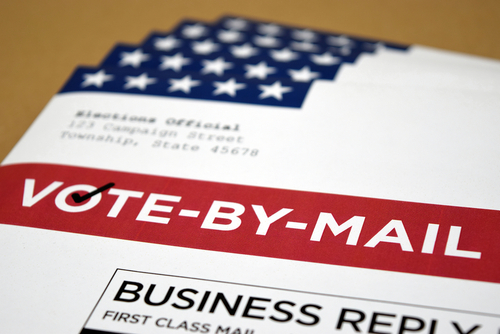With the 2024 presidential race approaching, Pennsylvania has once again emerged as the pivotal swing state that could determine the next occupant of the White House. Historically, Pennsylvania has been a crucial battleground, having voted for the winning candidate in 10 of the last 12 presidential elections. No Democrat has won the presidency without securing Pennsylvania since 1948, making it a key target for both major parties.
Armed with 19 electoral votes, Pennsylvania offers the largest prize among the swing states. Currently, polling shows a tight race between Donald Trump and Kamala Harris, with both candidates neck and neck in the state. According to Nate Silver, Pennsylvania has a 35% chance of tipping the entire election. This close contest is driven by a demographic and political shift that has made it difficult to predict a clear outcome.
HOLY SH*T 🚨 THOUSANDS of Students at Penn State are chanting “Trump, Trump, Trump” 🔥 👏
Kamala Harris has lost the Gen Z vote
Pennsylvania is MAGA Country 🇺🇸
— MAGA Voice (@MAGAVoice) September 19, 2024
Demographics in Pennsylvania have undergone significant changes since 2016, with the state seeing an increase in Latino populations, healthcare-driven suburban growth, and an evolving economic landscape. In Western Pennsylvania, particularly in Allegheny County, there has been an economic downturn, including the loss of over 50,000 jobs, which could push disillusioned voters towards the GOP. Meanwhile, in the booming Lehigh Valley in Eastern Pennsylvania, warehousing and logistics jobs have created new economic opportunities, but there are growing concerns over quality of life.
One of the biggest shifts in Pennsylvania has been in voter registration. Since 2020, Republicans have added more than 103,000 new voters, while the Democrats' lead in voter registration has shrunk dramatically from a 559,000 advantage to 169,000. This decline in Democratic dominance is partly due to economic dissatisfaction among voters, with many blaming the Biden administration for inflation and a perceived lack of economic progress.
And here it is,
WHISTLEBLOWER AUDIO RECORDING CONFIRMS,
BEYOND THE SHADOW OF A DOUBT,
Pennsylvania election officials could not reconcile the 2020 election and yet they certified the overthrow of United States government anyway. And they conspired by altering and destroying… pic.twitter.com/zaR1CqcRQY
— 🇺🇸RealRobert🇺🇸 (@Real_RobN) September 19, 2024
Among the key issues driving the race are the economy, immigration, and energy policy. Western Pennsylvania, with its natural gas industry, is particularly affected by Biden's energy policies. Trump has used this to his advantage, positioning himself as a champion of the working class, while also focusing on immigration concerns that resonate with a large segment of Pennsylvania’s population.
The importance of minority voters cannot be understated. Pennsylvania's Latino population, now 6% of the statewide electorate, has the potential to be a decisive factor if mobilized. Trump has seen an increase in support from both Latino and Black voters, groups that traditionally lean Democratic. Recent polls show Trump's support among these voters at historic highs, with 30% of Black voters and up to 40% of Hispanic voters backing him—a stark contrast to previous elections.
With such a narrow margin separating the candidates, both Trump and Harris are vying for the suburban vote, which has become increasingly critical in recent years. The suburbs of Philadelphia, which have traditionally been a Democratic stronghold, are now more competitive, as suburbanites express dissatisfaction with the current administration's handling of the economy and crime.
Despite all this, the outcome in Pennsylvania remains uncertain. Journalist Mark Halperin summarized the situation best when he said, “The answer is ‘don’t know.’” This ambiguity is driven by Pennsylvania’s diverse and shifting electorate, which makes it the ultimate swing state that could once again determine the direction of the nation in November.

